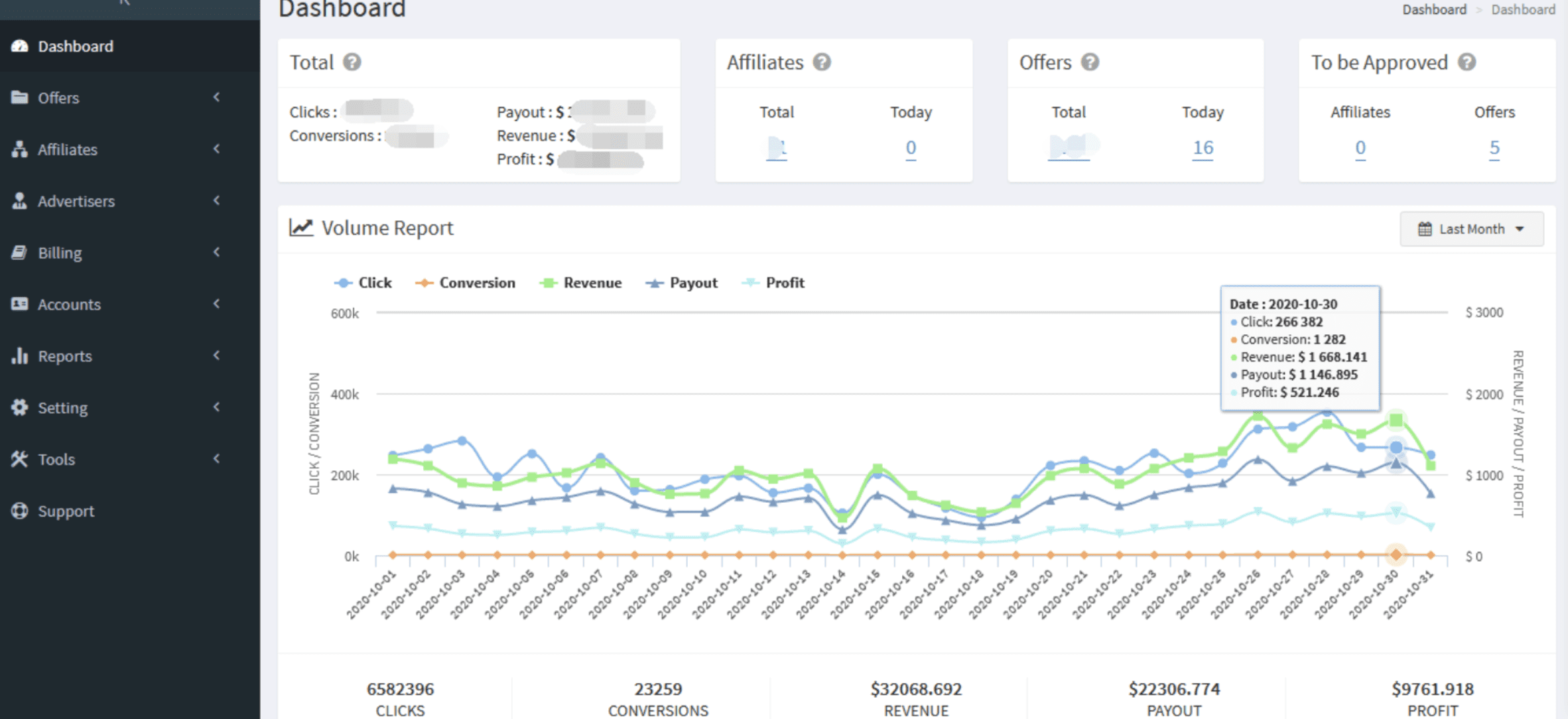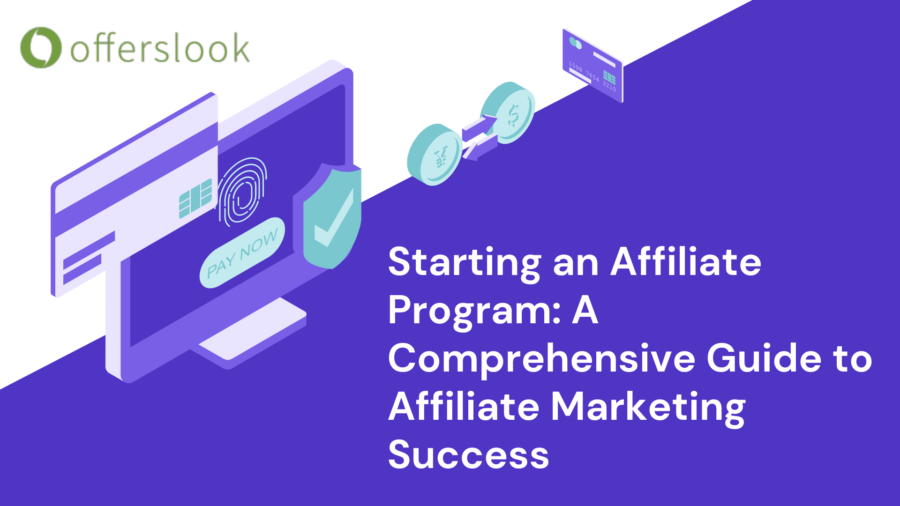In the digital age, businesses are constantly looking for innovative ways to reach their target audiences and maximize their revenue streams. One of the most effective methods for achieving this is through affiliate marketing. An affiliate program allows businesses to leverage a network of affiliates to promote their products or services, thereby extending their reach without the upfront costs of traditional advertising. If you’re considering starting an affiliate program for your business, this blog will guide you through the essential steps, benefits, challenges, and best practices to ensure your success.
What is an Affiliate Program?
An affiliate program is a marketing strategy where a business rewards affiliates (partners or publishers) for driving traffic or sales to the business’s website. Affiliates are provided with unique affiliate links to track their referrals, and they earn a commission for actions taken by the customers they refer, such as making a purchase or signing up for a newsletter.
Key Components of an Affiliate Program
- Affiliates: Individuals or companies that promote your products or services.
- Merchants: The businesses that offer affiliate programs.
- Commission Structure: The method of compensation for affiliates. This can include pay-per-sale (PPS), pay-per-click (PPC), or pay-per-lead (PPL).
- Tracking Software: Technology used to monitor affiliate activities, sales, and performance.
Why Start an Affiliate Program?
- Cost-Effective Marketing
Affiliate programs allow businesses to tap into a vast network of affiliates who can promote products without the upfront costs associated with traditional advertising. You only pay commissions when a sale is made or a lead is generated, meaning that your marketing expenses are directly tied to your revenue.
- Increased Reach and Exposure
Affiliates often have established audiences and networks. By partnering with them, you can expand your brand’s reach to new potential customers without significant investment. This expanded exposure helps build brand awareness and can lead to increased traffic and sales.
- Performance-Driven Results
One of the main advantages of affiliate marketing is its performance-based nature. You can measure the effectiveness of your marketing efforts through various metrics, including clicks, conversions, and overall return on investment (ROI). This data allows you to optimize your program for maximum results.
- Access to Diverse Marketing Channels
Affiliates use multiple marketing channels, including blogs, social media, email marketing, and video content. By starting an affiliate program, you can leverage these diverse channels to promote your products to different audience segments.
- Enhanced Credibility and Trust
When affiliates promote your products, they lend their credibility to your brand. Established affiliates with loyal followings can significantly enhance your brand’s reputation, as their audience is more likely to trust their recommendations.

Steps to Start an Affiliate Program
1. Define Your Goals
Before launching an affiliate program, it’s crucial to define what you hope to achieve. Identify your primary objectives, such as:
- Increasing Sales: Your main goal might be to drive more sales through affiliate promotions.
- Generating Leads: You may focus on acquiring leads for future marketing efforts.
- Boosting Brand Awareness: Establishing a presence in new markets or among new audiences can be another motivating factor.
2. Choose the Right Commission Structure
Deciding on the commission structure is a key aspect of your program. Some popular options include:
- Pay-Per-Sale (PPS): Affiliates earn a commission for every sale generated through their unique link.
- Pay-Per-Click (PPC): Affiliates receive a commission based on the number of clicks they drive to your website.
- Pay-Per-Lead (PPL): Affiliates earn a commission for generating leads, such as signing up for a newsletter or filling out a contact form.
Choose a model that aligns with your business objectives while also being attractive to affiliates.
3. Select an Affiliate Management Solution
To effectively manage your affiliate program, you’ll need an affiliate management solution. This can be software or an affiliate network that helps you track performance, manage payments, and communicate with affiliates. Some popular affiliate management platforms include:
- Offerslook
- CJ Affiliate
- AffiliateWP (for WordPress sites)
- Refersion
Evaluate the features and pricing of these platforms to determine which solution best fits your needs.
4. Design Your Program Terms and Conditions
Clearly outline the rules and regulations of your affiliate program in a terms and conditions document. This should cover:
- Commission rates and payment terms
- Guidelines on acceptable promotional methods (e.g., social media, email marketing, paid ads)
- Restrictions on bidding on branded keywords
- Policies for cookie duration and tracking
A well-defined policy ensures that both you and your affiliates understand expectations and prevents misunderstandings.
5. Create Compelling Marketing Materials
To help affiliates effectively promote your products, provide them with high-quality marketing materials, including:
- Banners: Eye-catching graphics for websites and blogs.
- Text Links: Simple, direct links to product pages.
- Email Templates: Pre-written emails for affiliates to send to their audiences.
- Product Information: Detailed descriptions, images, and benefits to help affiliates accurately promote your products.
The more resources you provide, the easier it will be for affiliates to market your offerings.
6. Recruit Affiliates
Once your program is set up, it’s time to recruit affiliates. You can:
- Leverage Existing Contacts: Reach out to influencers, bloggers, or existing customers who may be interested in your affiliate program.
- Use Affiliate Networks: Sign up for an affiliate network to gain access to a larger pool of potential affiliates.
- Promote Your Program: Use your website, social media channels, and email newsletters to announce your affiliate program and attract potential affiliates.
7. Provide Ongoing Support and Communication
Establishing a successful affiliate program requires ongoing support and effective communication with your affiliates. This can include:
- Regular Updates: Keep affiliates informed about new products, promotions, and program changes.
- Training Resources: Offer webinars, guides, and FAQs to help affiliates maximize their performance.
- Feedback Mechanism: Encourage affiliates to provide feedback on the program, which can help you make improvements.
8. Monitor and Optimize Performance
Regularly track your affiliate program’s performance to assess its effectiveness. Use key performance indicators (KPIs) such as:
- Clicks: The number of times affiliates’ links have been clicked.
- Conversion Rates: The percentage of visitors who complete the desired action (purchase or lead).
- Total Sales and Revenue: Monitor the total income generated through the affiliate program.
Use this data to identify top-performing affiliates, effective marketing strategies, and areas where improvements can be made.

Challenges of Running an Affiliate Program
While starting an affiliate program offers numerous benefits, it also comes with its challenges:
- Fraudulent Affiliates
Some affiliates may engage in deceptive practices, such as using misleading tactics or generating fake leads. Implement comprehensive monitoring systems to detect fraud and mitigate risks.
- Managing Relationships
Balancing relationships with affiliates can be a challenge. It’s essential to communicate regularly and build rapport to maintain loyalty and trust. Poor communication can lead to disengaged affiliates or misaligned expectations.
- Competitive Landscape
Depending on your industry, the affiliate marketing space may be highly competitive. You’re not only competing for customers but also for affiliates. Offering attractive commission rates and robust support can help you stand out.
- Tracking and Reporting Complexities
Effectively tracking affiliate performance, payments, and other metrics can become complex, especially as your program grows. Invest in reliable tracking software to streamline this process and provide affiliates with transparent reports.
Best Practices for Affiliate Programs
- Be Transparent
Transparency builds trust with your affiliates. Clearly communicate commission structures, performance metrics, and any changes to your program. Keep affiliates updated on their performance and any potential issues.
- Stay Compliant with Regulations
Familiarize yourself with regulations related to affiliate marketing, such as the Federal Trade Commission (FTC) guidelines in the United States. Ensure your affiliates are compliant as well, particularly when it comes to disclosures about earning commissions.
- Test Different Marketing Strategies
Encourage affiliates to experiment with various promotional strategies to find what works best for their audiences. This can include social media ads, blog posts, product reviews, or email campaigns.
- Focus on High-Quality Affiliates
While it may be tempting to recruit as many affiliates as possible, focusing on quality over quantity is crucial. Seek out affiliates who align with your brand values and have audiences that are likely to convert.
- Optimize for Mobile
With the rise in mobile shopping, ensure your affiliate program and marketing materials are optimized for mobile devices. This includes having a mobile-friendly website and providing mobile-ready promotional materials.
Conclusion
Starting an affiliate program can be a transformative step for your business, providing a cost-effective and scalable way to increase sales and enhance brand visibility. By following the steps outlined in this guide, you can launch a successful affiliate marketing program that not only drives revenue but also builds lasting partnerships with affiliates. Remember to continuously monitor and optimize your program, adapt to changes in the market, and prioritize clear communication with your affiliates. With the right strategies in place, your affiliate program can become a vital component of your overall marketing strategy and contribute significantly to your business success.
affiliate marketing softwareOfferslook’s referral program





